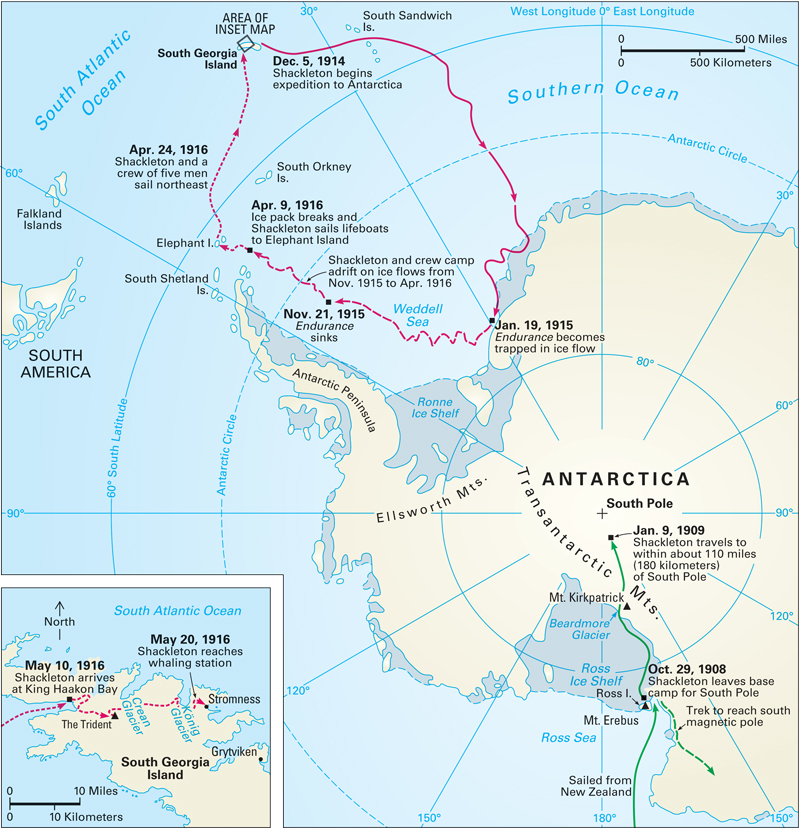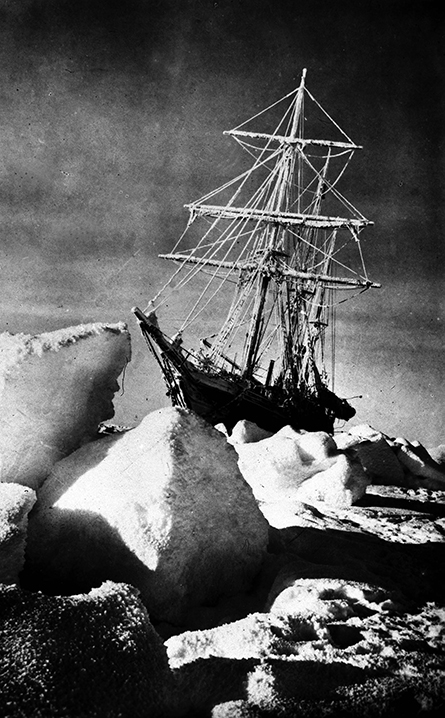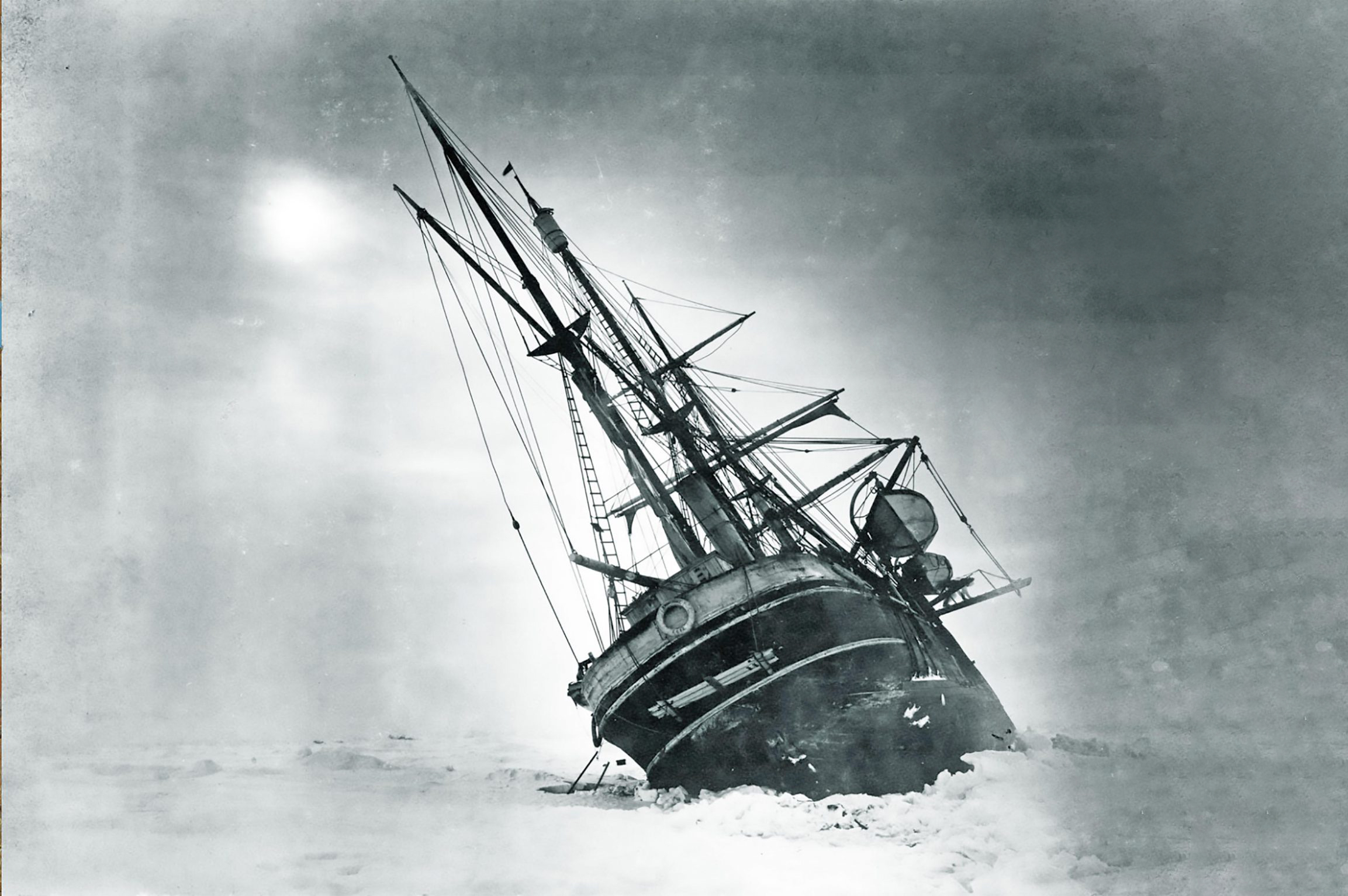Shackleton, Sir Ernest Henry (1874-1922), was a British explorer who made four journeys to Antarctica. In 1909, he came within 97 nautical miles (about 110 miles or 180 kilometers) of the south geographic pole, sometimes called simply the South Pole. Shackleton measured in nautical miles, because he wanted to reach a point within 100 miles of the pole. It was the farthest point south any expedition had reached. Shackleton also is known for a heroic rescue mission that he undertook in 1915-1916. 
Shackleton was born on Feb. 15, 1874, in Kilkea, County Kildare, Ireland, then part of the United Kingdom. His family moved to London, England, when he was a child. Shackleton was educated at Dulwich College in London. He joined the British merchant marine when he was 16 years old and served for about 10 years.
From 1901 to 1903, Shackleton served on an Antarctic expedition led by the British explorer Robert Falcon Scott. Shackleton was part of a small party that trekked across the Ross Ice Shelf. The group reached a point about 530 miles (850 kilometers) from the south geographic pole. It was the farthest south that anyone had gone. After returning to the United Kingdom, Shackleton worked as a journalist and as secretary of the Royal Scottish Geographical Society while raising funds for his own expedition. In 1906, he ran unsuccessfully for Parliament.
From 1907 to 1909, Shackleton led his British Antarctic Expedition. Shackleton and three of his men traveled overland from Ross Island toward the south geographic pole. On Jan. 9, 1909, they reached a latitude of 88 degrees 23 minutes, more than 400 miles (600 kilometers) closer to the pole than Scott’s expedition had gotten. Another small party traveled north from Ross Island and came close to reaching the south magnetic pole. Members of the expedition also made the first ascent of Mount Erebus, on Ross Island, in 1908, as well as the first motion pictures of Antarctica. Shackleton returned to England a hero and was knighted. 
Shackleton’s Imperial Trans-Antarctic Expedition of 1914-1917 did not accomplish its goal of crossing the continent from the Weddell Sea to the Ross Sea. However, it became one of history’s great stories of survival. Shackleton’s ship, the Endurance, became trapped in ice in the Weddell Sea near the coast of Antarctica in January 1915. It drifted north for about 10 months before it finally was crushed by the ice and sank on Nov. 21, 1915. The crew had abandoned the ship in late October, and they camped on floating ice for several months. In April 1916, they traveled in small boats to desolate Elephant Island, off the tip of the Antarctic Peninsula. Leaving 22 men on Elephant Island, Shackleton and five companions then made a daring open-boat journey of 800 miles (1,300 kilometers). They sailed northeast and reached the island of South Georgia in 17 days. Shackleton and two men trekked across the island’s snowy mountains for 36 hours to get help at a whaling station. It took until August 1916 to reach the 22 men stranded on Elephant Island, but the entire expedition of 28 men was rescued. 
Shackleton served with British forces in Russia near the end of World War I (1914-1918). He set out once more for Antarctica in September 1921. However, he died of a heart attack on his ship in Grytviken Harbour, South Georgia, on Jan. 5, 1922. Shackleton wrote about his adventures in the books The Heart of the Antarctic (1909) and South (1919). 
In 2022, a search expedition organized by the Falklands Maritime Heritage Trust discovered the shipwreck of the Endurance. It was at the bottom of the Weddell Sea, east of the Antarctic Peninsula, about 4 miles (6 kilometers) from its last position as recorded by its captain. The ship’s hull (body) was largely intact. Under the international Antarctic Treaty, the ship was protected as a historic site and monument and left undisturbed. 
